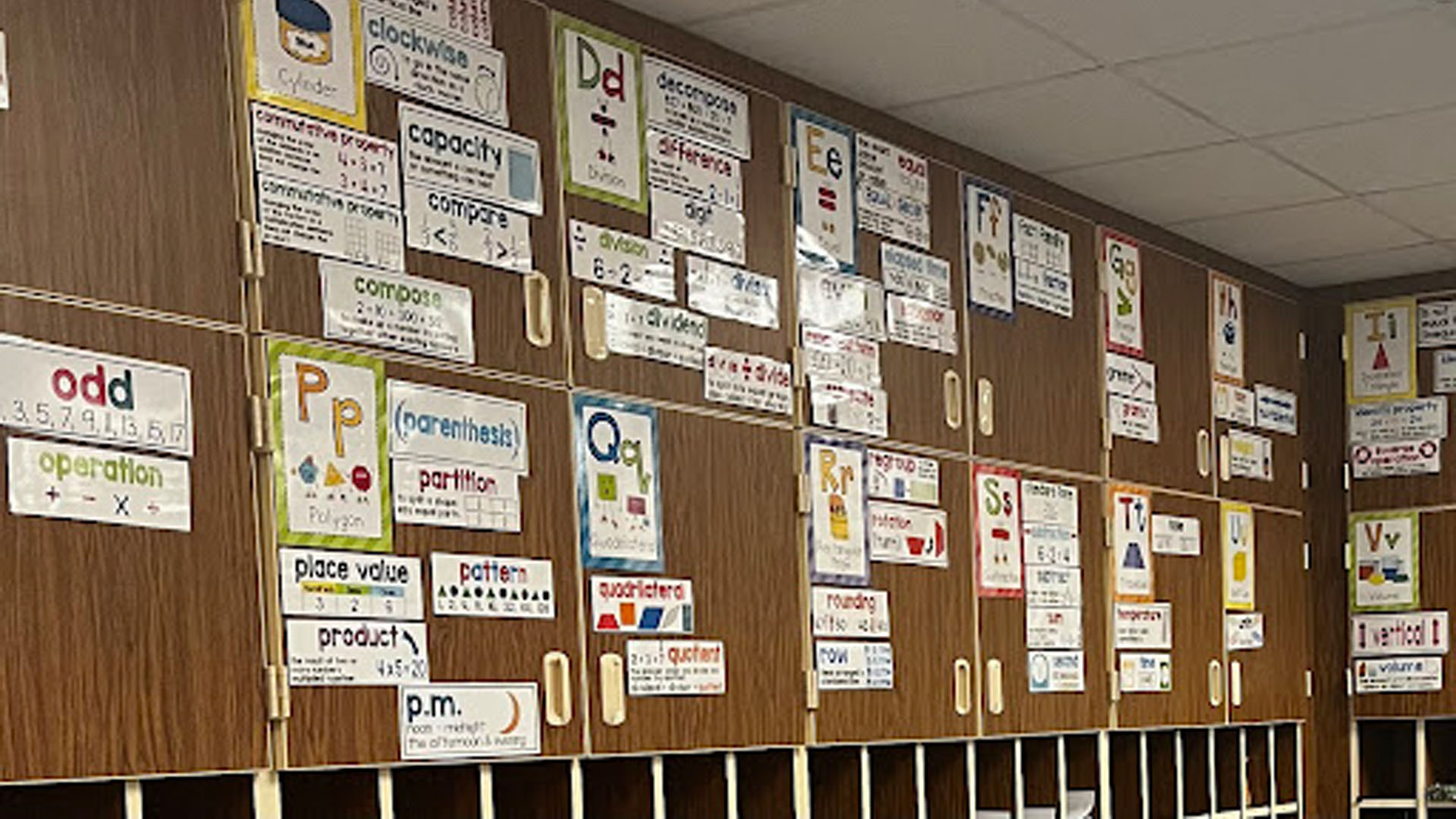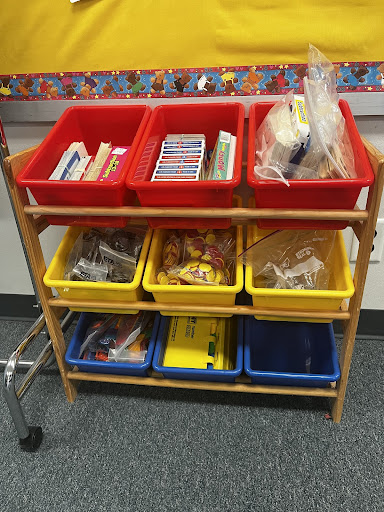My mom was an English and theater teacher. My dad owned an advertising agency and wrote/directed/produced commercials. We attended a lot of sporting events, theater productions, went on hiking trips, and listened to a lot of music. In my family, we never really talked about numbers and math – even though in all our adventures as a family, numbers and math were very prevalent.
My first memory of math in school is timed tests. I was in fourth grade, and my nines were something I just couldn’t get. When a timed test was put in front of me, I would look for all the nines, do those first, and then go back and try to finish the test. I never finished the test.

In my first blog for Keep Indiana Learning, I already talked about how I became a math person. In that blog, I talked about how the jobs in STEM related fields are rising while there are fewer Americans seeking STEM related jobs. I believe this is because math is not a recognized part of our culture. Math is literally everywhere and used in everything, but we don’t spend enough time acknowledging this fact. Rather, we shy away from the topic. We hear more about how people aren’t math people than people recognizing math is all around them. In my 10 years of doing professional development for elementary teachers in mathematics and teaching undergrads math methods courses, the majority I encounter do not see themselves as math people. Their math autobiography is not one full of fond memories. Are there some who loved math? Who thrived doing timed tests? Whose parents worked in STEM fields and happily helped with homework at home? YES. However, it’s simply not the majority.
While I can have lifelong dreams of encouraging ALL the people to embrace the amazingness of math, that’s an ambitious goal. I’m willing to tackle it, and in doing so, I think the first place we can start is in our classrooms and schools.
The first question to ask yourself as a teacher is, when people walk into your classroom, do they know that math happens in there? Oftentimes, in our elementary classrooms, we see a library of books, a writing center, a cluster of computers, a word wall, and etc. Where is the math? The environment helps define the work that is happening in the classroom. Does the environment say, “We do math in here”? If we want our students to see themselves as math people and embrace a culture of mathematics in their classrooms, math needs to have as much a presence as all of the other subjects taught in the classroom.
If we want our students to see themselves as math people and embrace a culture of mathematics in their classrooms, math needs to have as much a presence as all of the other subjects taught in the classroom.
There are several ways you can easily make math visible in your classrooms. Here are a few to think about as you are starting your school year!
1. Make your math manipulatives as prevalent as your classroom library.
Math manipulatives and other tools should be readily available, and the placement should be just as important as books.
2. Create a math word wall!
Teaching a new math concept connected to an important math vocabulary word? Put that word up on the math word wall so kids can use the word wall when they’re attending to precision with their math language!
3. Highlight children’s thinking with a strategy wall!
Just like we can highlight authors’ work, we can highlight children’s; after all, they are the authors of their mathematical thinking. Once their strategy is put on the strategy wall, they become the experts of that thinking, and others can go to them for assistance when they want to try a new way of thinking!
4. Do you believe that every single child in your classroom has math and the ability to share it?
If not, you have to change that thinking right now. Indeed, while children might not be thinking about numbers, operations, and computation just like you, they have ideas to contribute to the conversation. Create an environment where they are allowed to think in ways that make sense to them, and honor and cherish that mathematical thinking at all times. Children must realize the way they think about solving problems is unique, important, and can inspire others.
5. Speaking of conversations, create spaces…
…in whole group, small group, and independent work – where children talk about the math they are doing and observing. Mathematics is not done in isolation; it is a collaborative process. A culture of mathematics includes conversations and debate about the math.
Create an environment where they are allowed to think in ways that make sense to them, and honor and cherish that mathematical thinking at all times.
6. With that, guarantee your space will be one where children will make mistakes…
…and mistakes are ok because not only was there still great mathematical thinking happening, they were able to learn from the mistake they made! Further, they are going to make mistakes because you are going to…
7. Create tasks that are complex, require documentation of thinking, and force students to think!
Yes, even at the beginning of the year, they can, and will think. If we don’t give them the chance to work hard and be critical thinkers, they won’t.
8. If you’re going to have a culture where mistakes are valued and kids critically think when they do math, you’ll also need to have one where children are willing to take risks.
Struggle is ok. In fact, we learn best when we have to grapple, reflect, try something, fail, and start over. This is a simple life skill that we can embrace, teach, and promote in our math classrooms.
9. Fill your room with real world pictures in which students can look for the math.
Create a space where they are thinking and wondering about what they see and inquiring about it through the lens of mathematics. Encourage them to bring in their own pictures and discoveries to share with classmates about where they see the math. Help them make connections to math in their lives. All of the things I did with my family – sports, theater, outdoor activities – all had math directly involved in them – it was just that nobody was pointing it out. Help them see the math and see the math in their lives. If you, their math teacher, don’t see yourself as a “math person,” this will help you too!
….and finally,
10. Love math.
Right this very minute. You love math. Math is the greatest thing EVER. You ARE a math person! Even if you feel you have to fake it, math, and numbers, are AWESOME. If you convey any other emotion about math, your students will do the same! I am so grateful to Connie Largent, principal at Stonegate Elementary School in Zionsville, IN, for pointing this idea out to me years ago…
Just love math.
We learn best when we have to grapple, reflect, try something, fail, and start over.

These ideas aren’t mine alone. Thinking about creating a classroom culture of mathematics was something that really came to light when I was working with Liz Keefer, a second grade teacher at Eastbrook Elementary School in Pike Township. She came to me and said, “I have to do math better,” and her perseverance in doing so was positively phenomenal. First thing she did? Put her math manipulatives front and center in her classroom. They were literally in the middle of her classroom! My ongoing thinking partner, Ryan Flessner, played a crucial role in pointing out the lack of visible math in elementary classrooms as we traveled about working in schools. There are gobs of teachers that have inspired me to think about this over time as they have embarked on creating these classroom cultures. Over time, I hope I am thanking them for their inspiration and thoughtful contributions to the math world. Beyond my own connections, check out #elemmathchat on Twitter – you’ll find yourself endlessly inspired by the amazing work of teachers everywhere creating cultures of mathematics in their classrooms. I was recently reminded of this awesome graphic brought to us by Jo Boaler and YouCubed. Graphics, tweets, and blog posts are helpful; however, if we don’t make the moves in our classrooms, we aren’t going to see any changes towards the overall attitude about math. And remember, your moves can be small moves that you make over time! What’s your small step to create a culture of mathematics in your classroom going to be this year?
Resources
Please login or register to claim PGPs.
Alternatively, you may use the PGP Request Form if you prefer to not register an account.


